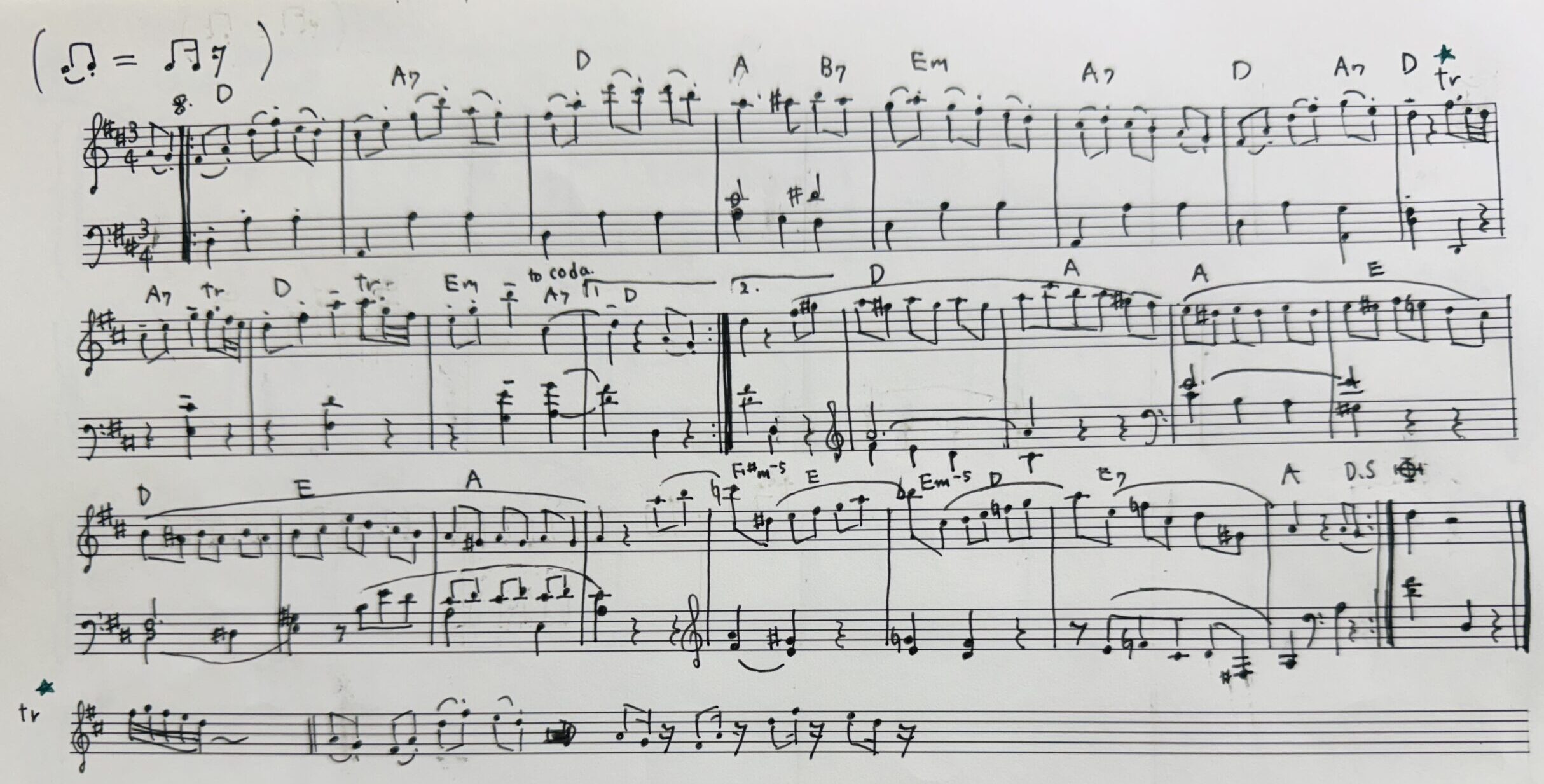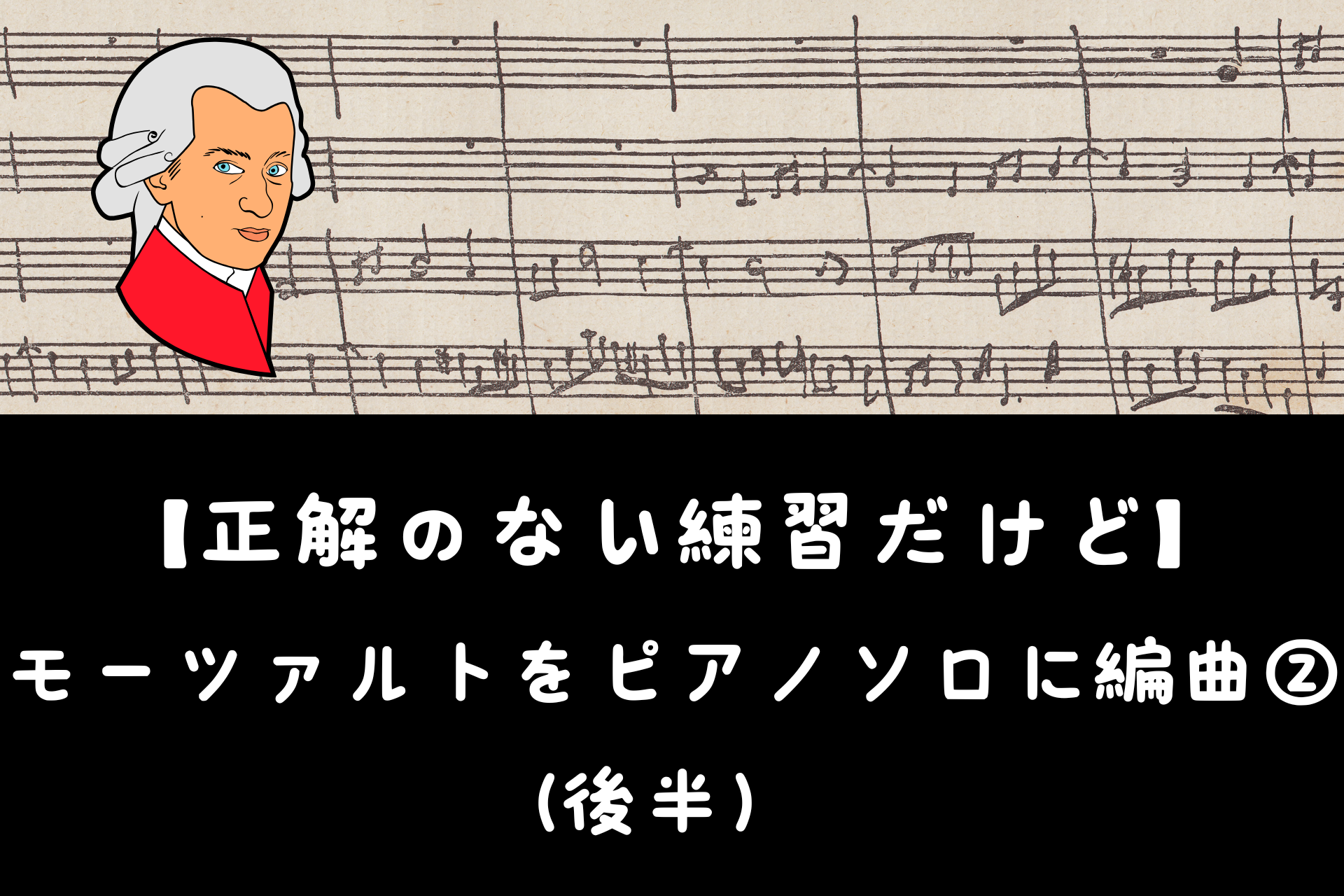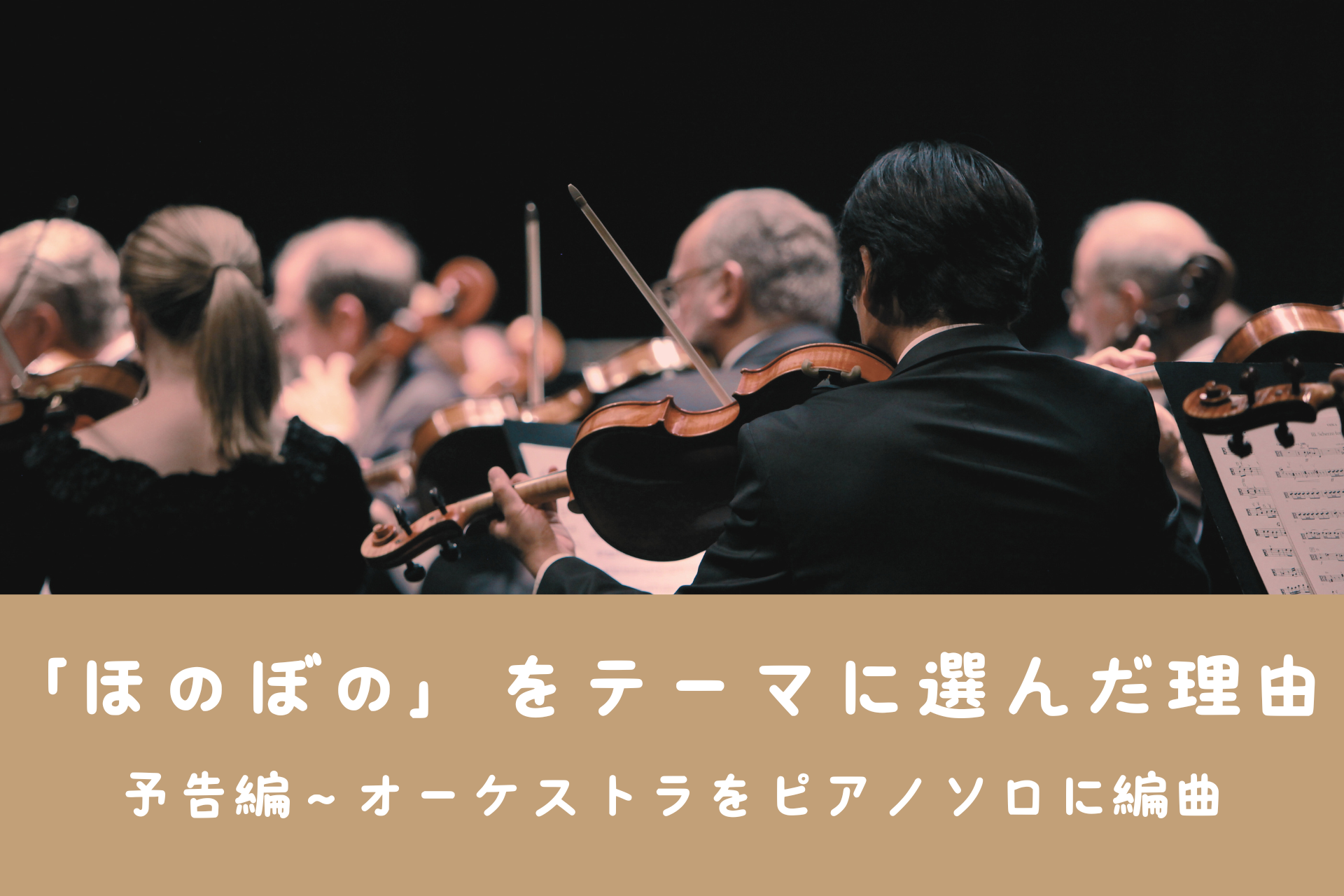モーツァルトをピアノソロに編曲②/Mozart Menuett (Divertimento D-Dur K334 3mov.)
前回の続き、モーツァルトのメヌエット。
オーケストラをピアノ曲にアレンジしました。
オーケストラで演奏する音数とピアノから出る音数は少ないです。
なので音数はもちろん、厚みがないし、弾いてみたらただの縮小版だった、、ということにならないように、大切な音、軸になる音を考えて編曲します。
編曲の技術というより、どの音をメインに聴いているのか、ということになるのかなとも思います。
実際に手を動かしてやってみるとかなりの勉強になりますよ。
原曲はもう少し長いですが、カットしました。

D-dur
ダウンロード用
バイオリンとピアノのデュエット

オーケストラ(16:05)


色々聞いてみると、なんの音を使うと良い響きになるのかわかってきますね。
便利なものがたくさんある世の中、お金を払えばなんでも手に入れられるし、時間をかけなくても秒で答えがわかる。しかし、ピアノのような体で覚えるような芸事は、試行錯誤した時間のすべてが価値になります。
一見すると、ムダなことでも、5周回って今やっていることにつながる。そういうシステムなんだと思っています。
ちなみに私は、コピーをしたはいいけれど、途中でつまづいてやめてしまった曲も多数あります。
あぁ、なんて根気がないんだとガッカリしたけど。あっちこっち手をつけたけど、量としてかなりやったと思うから、一応これも価値。
最後まで、キチキチやらなくても、8小節できれば合格!の気持ちでやってみてください。
メヌエットはゆったりしているのでやりやすいかも知れません。
正解のない練習だけど・・・
伝えたかったのは、こんな勉強もあるよ、ということです。
かなり高度だけど採譜、耳の力、アレンジ力など、普段の練習だけでは身につかないことができると思います。
それに正解がないので、悩みがわんさかと出てくると思いますが、それも肥やし。
ピアノ用の楽譜も売ってると思うし、スコアも手に入るから、こんな手間のかかることをいちいちやってみようなんて誰も思わない・・けど、これは遠回りが一番の近道になると思うんです。
本当は、ここを経てから5級の勉強をしてみると良いのだけど、みんないきなり教科書で勉強してしまうので、ぎこちないまま試験を受けちゃう。
外遊びをしないまま、大人になっちゃうようなものです。
つれづれなる想い
実はまだまだ自分の仕事に納得がいっていません。
客観的に自分を見たとして、うまくいっている自分を遠くから見てみると、とても幸せな自分がいるんだけど。
しかし開拓しきれてない未知の自分と向き合った時に、とても苦しくて、もう泣くことしか思いつきません。
ネタが思い浮かばないとかそういうことではなく、(ネタなどいくらでもある)
仮にネタが思いつかない時は、技術的なことよりも精神的に疲れていたり、体の調子が良くない時です。
病気とは違って、気分が通常ではないという意味になるけれども。
そんな時は、寝たい時は寝て、食べたいものは食べる、どこかに行きたい時は行くし、
とにかく好きなことをすることにしています。
それで大抵は解決するから。
配信会社からちゃんと結果が来るんです。
ショートで使用されると、爆発的に広がるみたい。
古い曲が今頃になって、芽が出始めたり、新曲が一気に伸びたり、全く再生されなかったりで、皆目見当がつきません。まあ、気長に待ってます。
今回も最後までありがとう。
感想、意見、質問などはこちらへどうぞ。

English Version/ Mozart’s Minuet – Arranging for Solo Piano (Part 2)
This is a continuation from my last post — a solo piano arrangement of Mozart’s Minuet.
I arranged the piece originally written for orchestra into a piano version.
Obviously, the number of notes that can be played on a piano is far fewer than in an orchestral performance.
Without careful thought, it can easily turn into a “shrunk-down version” with no depth or impact.
So I focused on identifying which notes were essential — the core, the spine of the music — and built the arrangement around them.
It’s less about arrangement “technique” and more about what sounds you’re truly listening to as the heart of the music.
Once you actually try arranging with your hands, you’ll see just how much you can learn from it.
The original is a bit longer, but I trimmed it down.
Key: D major.
Sheet music download:
🎻 Violin & Piano version:
YouTube link
🎼 Full Orchestra version (starts at 16:05):
YouTube link
Listen closely, and you’ll start to hear what works
There are so many resources available nowadays.
If you pay money, you can get just about anything. Answers come in seconds.
But when it comes to piano — or any art form that requires your body to remember —
it’s the time spent struggling and exploring that becomes the real treasure.
Something that might feel pointless at the time may, after five loops around, suddenly connect with what you’re doing now.
That’s just how this whole system works.
By the way, I’ve started copying out pieces and given up partway many, many times.
Sometimes I felt frustrated with myself, thinking, “Why don’t I have more patience?”
But looking back, I’ve touched so many pieces in total that I think that alone holds value.
You don’t have to complete every note.
Even if you get through just 8 bars — that’s already a win. That’s your “pass.”
Practicing without a clear answer
What I wanted to share here is: this is also a form of study.
It’s pretty advanced stuff — transcription, ear training, arranging.
Things you can’t really master just by doing typical daily practice.
There’s no one right answer, so yes — you’ll probably struggle a lot.
But that struggle? It becomes fertilizer.
Of course, you could just buy a ready-made piano score, or download the orchestral score.
So, not many people would go out of their way to do this by hand.
But strangely, this time-consuming route ends up being the fastest way in the long run.
Honestly, if you could go through this kind of process before diving into something like Yamaha Grade 5,
you’d understand the material more deeply.
But most people jump straight into the textbook.
It’s like becoming an adult without ever playing outside.
Personal Reflections
I’m still not fully satisfied with my work.
From a distance, I can sometimes see myself doing well and feel happy about it.
But when I face the parts of me I haven’t explored yet, it’s painful.
Sometimes all I feel like doing is crying.
It’s not about running out of ideas — I have plenty.
But when the ideas don’t flow, it’s usually not technical.
It’s when I’m mentally or physically tired.
Not ill, exactly — just not feeling like my usual self.
So when that happens, I rest. I sleep if I want to, eat what I feel like eating,
go where I want to go, and do what I love.
That usually does the trick.
About distribution & reach
My distributor sends me regular updates.
If a song gets used in a short video, it can go viral overnight.
Sometimes an old song starts picking up traction again.
Sometimes a new one takes off.
Sometimes… nothing happens at all.
It’s completely unpredictable.
But I’m staying patient and letting it unfold.
Thoughts, questions, or feedback?
This post was translated with the help of AI.




コメント